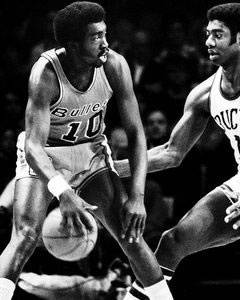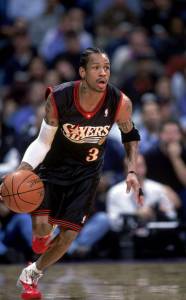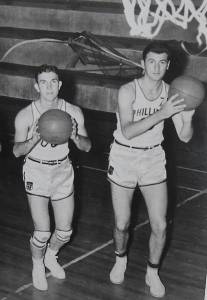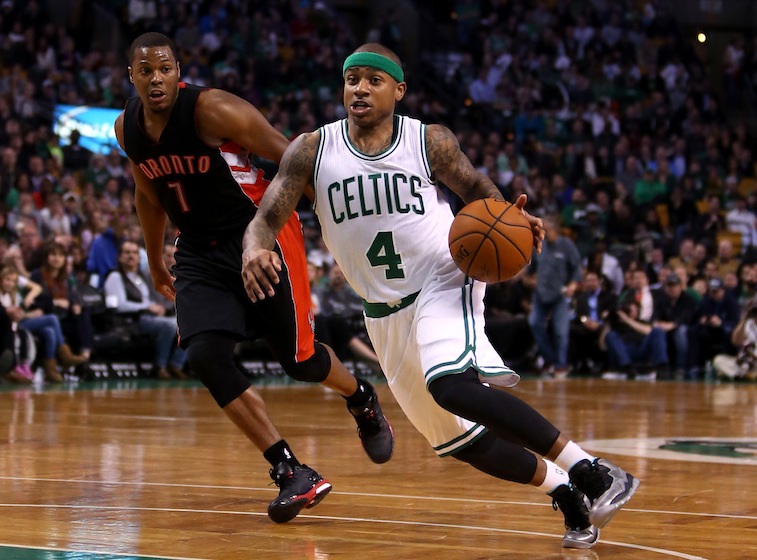The greatest benefit of having a press-row seat at University of Texas basketball games in the 1996, 1997 and 1998 seasons was that I got an up-close view of how the game was played (by 10 athletes) and called (by 3 men in black-and-white striped jerseys—the referees). I have never purported to know every rule and by-rule of the college and pro games, but I know enough. One thing that irked me no end was the fact that traveling was so seldom called. This, I suppose, can take three forms. The player holding the ball can shuffle his feet, he can take too many steps before shooting or he can literally carry the ball while dribbling it. People on press row are supposed to be professional, staying quiet and refraining from any sort of demonstration, such as cheering for one team or the other. Fine. But when I saw refs refuse to make the call when a guy (or girl; this included the women’s games too) traveled, I sometimes did a discreet rolling-hands motion or imitated how the player had carried the ball in between dribbles.
A little traveling music…
If this is bad in college hoops, you can double it in the pros. The NBA is without a doubt the world’s premier gathering of male basketball players. These guys are the best of the best with skills that most of us can only dream of. The intensity, speed and elevation they display on courts from Miami to Portland and LA to Boston are breathtaking. But they travel shamelessly. An extra step or two—or three—when  launching a shot is generally forgiven. This seems to be the case especially when a player is heading for a dunk. He wants it to be accomplished with the utmost emphasis, right? The refs are watching, whistles in mouths. But none are blown despite the guy taking that extra step(s) before ram-jamming the ball. “Let it go” seems to be the motto, especially if the game is being played at home.
launching a shot is generally forgiven. This seems to be the case especially when a player is heading for a dunk. He wants it to be accomplished with the utmost emphasis, right? The refs are watching, whistles in mouths. But none are blown despite the guy taking that extra step(s) before ram-jamming the ball. “Let it go” seems to be the motto, especially if the game is being played at home.
I find these additional steps exasperating. Whenever I watch an NBA game, I get upset and holler, “He’s traveling!” “He’s carrying the ball, ref!” Or, no longer constrained by press-row protocol, I do exaggerated versions of the above-cited rolling-hands motion or my imitation of a player palming the ball. That sin, in my view, is even worse. It is most often perpetrated by guards. Now let me state that dribbling is a very important part of the game. Its value can hardly be overestimated. A player with a good “handle” really helps his team, especially when the defensive pressure is on. You think the defensive players don’t bend the rules to the breaking point? Happens all the time, but that does not drive me to distraction. Palming the ball does. A player who puts his hand under the ball and then goes ahead with another dribble is flat-out cheating. He is gaining a competitive advantage over his defender. The defender does not know: Is his man stopping his dribble or going on with it? And since the defender has some degree of uncertainty, he may do either. The creative dribbler may then go this way or that way while the man defending him is left in the proverbial dust. The fans and radio and TV announcers, of course, go “ooh” and “aah.”
Iverson—oh, please
Current players most guilty of this are Tony Parker of San Antonio, Dwyane Wade of Miami and Jimmy Butler of Chicago. Before them was Allen Iverson of Philadelphia, famous for his “crossover” dribble which was of dubious legality. But you know who it may have started with? Earl Monroe of New York.  Yes, he was a frenetic ballhandler with his stutter-steps and high-dribble spin moves. But like Iverson and the others, what he did was quite often a clear violation of the rules. Just because it’s okay in street ball doesn’t mean it is in the NBA.
Yes, he was a frenetic ballhandler with his stutter-steps and high-dribble spin moves. But like Iverson and the others, what he did was quite often a clear violation of the rules. Just because it’s okay in street ball doesn’t mean it is in the NBA.
This matter of players carrying the ball and refs winking at it has been going on for decades. When Mendy Rudolph, Earl Strom or Joe Crawford were working games, they were fairly strict. You got one extra step before shooting, but no more. If you took an extra step, you heard a whistle and had committed a turnover. And palming? They weren’t going to allow that stuff, no way. But somehow, slowly, it became acceptable. It was an incremental matter—just a little bit, then a little bit more and before you know it these guys are palming outrageously, and nary a call is made. All in the name of entertainment, you know.
Kerr, Hoiberg dare complain
In 2016, Steve Kerr, coach of the Golden State Warriors, saw his team lose a key regular season game to San Antonio. He was incensed that one of the Spurs had been allowed to walk/carry/travel/palm at will. “I need to write down that traveling is now allowed in the NBA,” he said in a joke that was really not very funny. “Silly me. I forgot that they got rid of that rule, so we’ll have to adjust.”
More recently, Fred Hoiberg, coach of the Chicago Bulls, saw his team lose a playoff game to the Boston Celtics. One player set him off—Isaiah Thomas, who had just lit the Bulls up for 33 points. Hoiberg opined that Thomas carries the darn ball on virtually every possession and is thus “impossible to guard.” This was my point earlier. By palming the ball, a player gains an unfair competitive advantage. The NCAA and NBA have rule books that are unambiguous on what refs must call. Do they ignore the rule books? I am here to tell you they do, at least in the case of the NBA. In 2005, the league’s supervisor of referees, Joe Borgia, made this rather startling comment about traveling: “We really don’t reference the rule book.” Borgia admitted that the rule book is consciously ignored! Why, then, have a rule book at all?
 Maurice Podoloff was the commissioner of the NBA from the league’s inception in 1946 to 1962. Did he let his referees exercise such on-court leeway? How about Walter Kennedy (1963 to 1975), Larry O’Brien (1976 to 1984), David Stern (1985 to 2015) or Adam Silver (2016 to the present)? Under whose watch did this transmogrification happen? Every commish is probably guilty to some extent, but especially the latter three.
Maurice Podoloff was the commissioner of the NBA from the league’s inception in 1946 to 1962. Did he let his referees exercise such on-court leeway? How about Walter Kennedy (1963 to 1975), Larry O’Brien (1976 to 1984), David Stern (1985 to 2015) or Adam Silver (2016 to the present)? Under whose watch did this transmogrification happen? Every commish is probably guilty to some extent, but especially the latter three.
When Hoiberg criticized Thomas, he was pilloried in the media and called a crybaby. One columnist said he was caught in a time warp, as if Hoiberg wanted to go back to the days when unathletic players walked the ball up and down the court, and hoisted two-handed set shots. I don’t think so. Thomas, when told that the Bulls’ coach had drawn attention to his tendency to palm the ball, smirked and uttered my least-favorite expression by modern-day jocks: “It is what it is.”


Add Comment